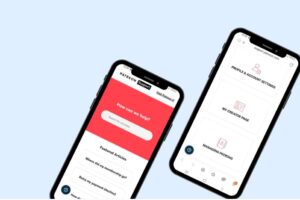Data extraction refers to the collection of different data types from a variety of sources. The sources include emails, documents, websites, databases, software-as-a-service (SaaS) products, web applications, search engine results pages (SERPs), and more. The data, once extracted, can be fed into data analytics tools to unearth useful information that can benefit a business or an individual user. Alternatively, it can also be used in data mining programs that uncover patterns and trends and provide predictive models.
Industries that Conduct Data Extraction
In the overall data economy, data is helpful for companies operating in different spaces. Such companies include:
1. Marketing organizations
Data enables these companies with market segmentation, allowing them to understand their consumers and target them more accurately.
2. Banks and securities firms
These organizations collect data on market conditions and their customers in order to undertake risk analysis, predictive analytics, sentiment measurement, fraud mitigation, and more.
3. Legal firms
Legal documents often contain a lot of data, although it normally exists in an unstructured format. Legal firms, therefore, use data extraction tools to extract data from these documents. They convert the data into a structured format before using it to create models.
4. Logistics and transportation companies
Logistics companies use data to improve their customer experiences. For instance, it is through data that they can identify patterns associated with increased demand. Such patterns notify them about the appropriate times to send out more delivery vehicles, for example.
5. Healthcare institutions and pharmaceutical companies
These organizations use big data to uncover analytics that can help improve customer satisfaction and medical services.
6. Consulting firms
Consulting firms collect data on different industries. This helps their experts understand their clientele’s respective markets in order to offer informed recommendations based on the predictive models generated from the data collected.
7. Media and entertainment companies
Data extraction enables media companies to identify trending topics and important discussion points that they can use to create better content. This data also enables them to measure the performance of newly released shows or movies. It also enables them to recommend shows, for instance, to audiences in a given location.
8. Education institutions
Data extraction is useful in research. At the same time, institutions can collect data, with the resulting insights enabling them to understand teaching and learning patterns and trends. It is through identifying the patterns that they can identify the gaps to fill.
9. Manufacturing industries
Data collection enables companies to make data-driven decision-making.
10. Insurance
Insurance companies utilize data to undertake predictive analytics to increase sales and profitability. It is also important in preventing insurance fraud.
11. Retail and wholesale companies
Given the level of competition in this industry, companies rely on data collection to maintain a competitive edge. The data enables them to come up with better products, prices, and more.
Hardships of Collecting Quality Data
The companies in each industry above can only benefit if and when they collect quality data. However, such data is not always accessible and readily available. So, why is collecting quality data challenging? There are many reasons for this, including the following:
12. Abundance and diversity of data sources
This causes multiple data types and complex data structures. For instance, data found on the internet can exist in the form of images, HTML files, PDFs, or Word documents. This makes it difficult to integrate the different data types.
13. Data volume
There is an abundant amount of data generated daily. This increases the complexity of judging the data quality within a reasonable period.
14. Rapidly changing data
Data is consistently changing, meaning, in some cases, it is only useful for a short period. In this regard, companies that cannot collect data in real-time or extract insights as soon as the data is ready are left with obsolete data whose quality has long been depleted.
15. Inconsistent data quality and collection standards
There are currently few to no unified standards that govern data quality and data collection. This creates a situation where data collected from different locations exist in a non-standardized format that affects the quality.
16. Lack of contextualization
Sometimes, the data collected only makes sense when analyzed in a given context. A lack of contextualization, therefore, negatively affects the quality.
17. Data complexity
The data may sometimes be too complex to be understood by the people collecting or analyzing it.
18. Technological and cost limitations
To safeguard the quality of the data, it is sometimes necessary to use advanced data extraction technologies. But when there is no budget to facilitate this, then the quality is affected.
How to Collect Quality Data
Fortunately, you can deal with some of these challenges using web scraping solutions such as the scraper API. It is a tool designed to extract different types of data from the internet, including HTML-based data, images, documents, and more. It can also collect large volumes of data from hundreds of web pages simultaneously and in real-time. Check this Oxylabs page to learn more about a scraper API.
Conclusion
A scraper API is a useful web scraping tool that enables you to extract quality data from the web. It can extract different data types. Additionally, the scraper API can collect data as soon as it is generated, dealing with some of the hardships of collecting quality data.






![YouTube SEO in 2024 [Definitive Guide]](https://getpixie.com/wp-content/uploads/2024/02/shutterstock_1684828252-1-150x150.jpg)








